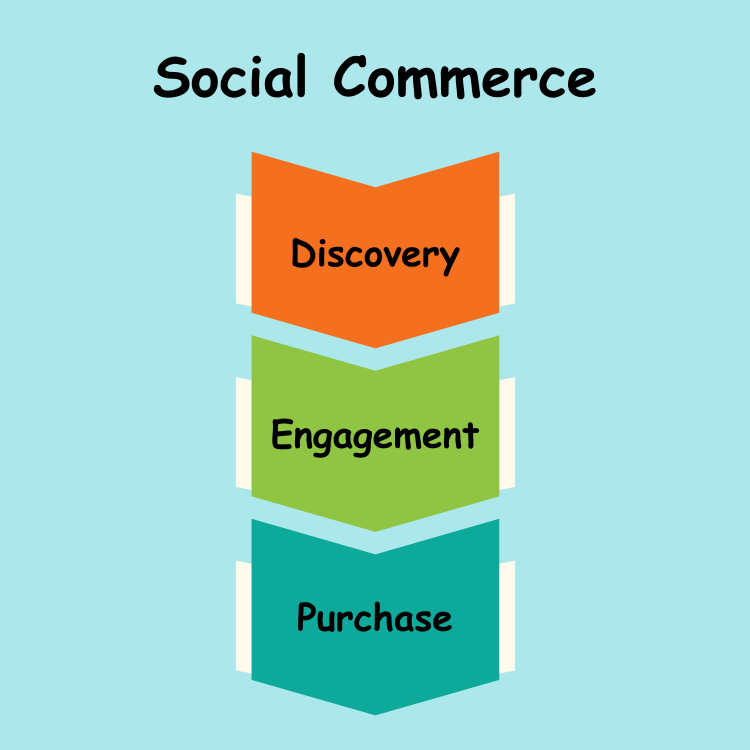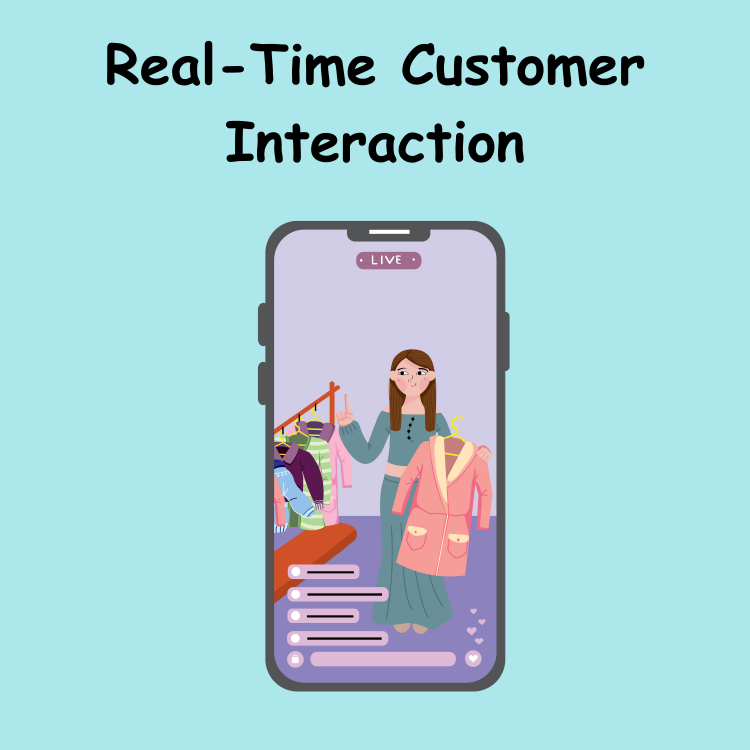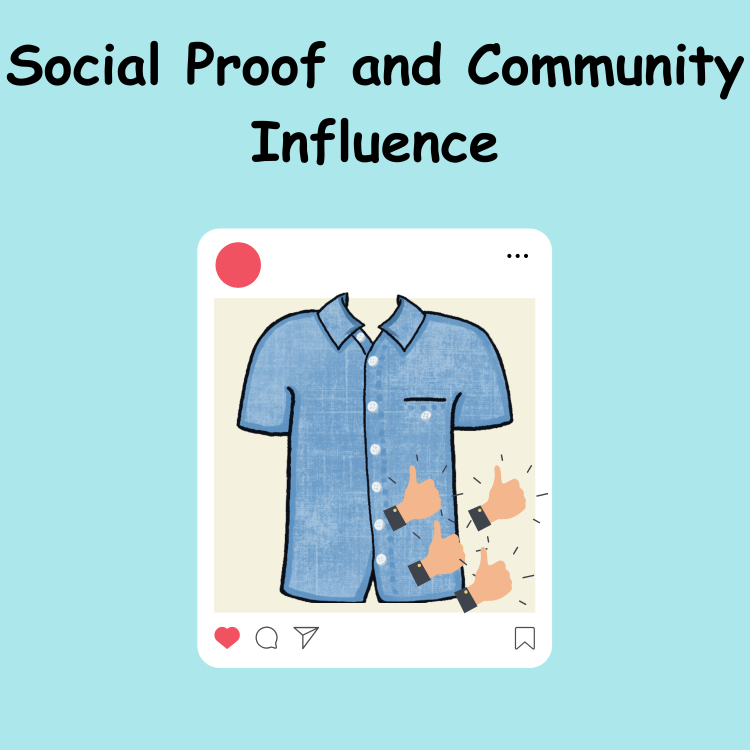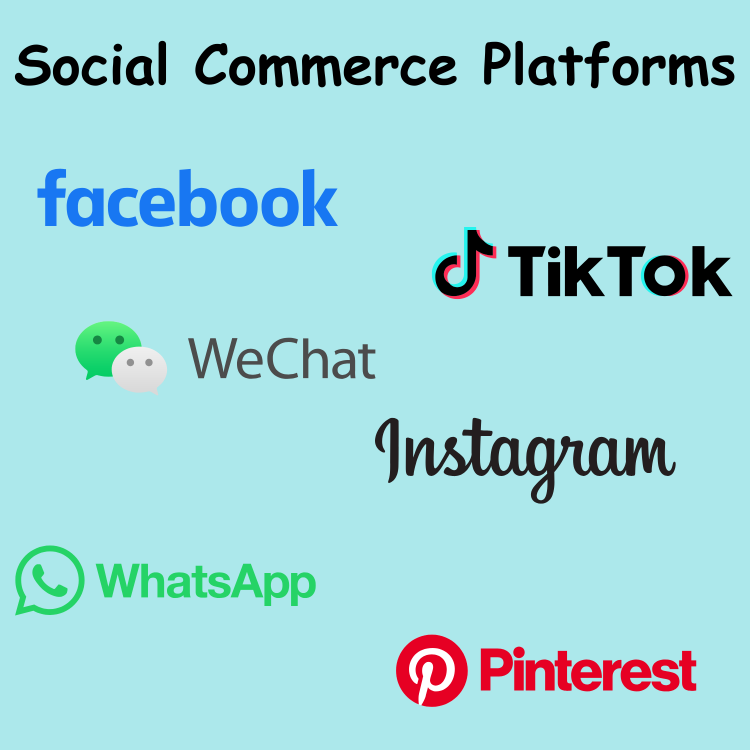Social commerce has redefined the way businesses interact with customers, blurring the lines between social networking and online shopping. By integrating purchasing experiences directly into platforms like Instagram, TikTok, and Facebook, brands are meeting customers where they already spend significant amounts of their time.
Why does social commerce matter so much today? The shift toward mobile-first experiences and the growing reliance on social media for discovery and engagement have made it essential for brands to merge content and commerce. Customers no longer just browse—they expect to shop directly from posts, live streams, and stories. This creates not only a frictionless journey but also amplifies the influence of peer recommendations and viral trends.
This guide will explore the top social commerce platforms shaping 2025 and highlight strategies to help businesses leverage this powerful sales channel. Whether you’re new to social commerce or looking to refine your approach, the insights here will equip you to take full advantage of this booming market.
Table of Contents
- What is Social Commerce?
- Benefits of Social Commerce for Businesses
- Top Social Commerce Platforms in 2025
- Key Strategies for Success in Social Commerce
- Challenges in Social Commerce and How to Overcome Them
- Frequently Asked Questions (FAQs)
- Summary
What is Social Commerce?

Social commerce is the integration of social media platforms and eCommerce, allowing businesses to sell products directly through social networks. Unlike traditional eCommerce, where customers navigate to a separate website to make purchases, social commerce enables shopping experiences within platforms like Instagram, Facebook, TikTok, and Pinterest.
This model goes beyond just displaying products—it combines shopping with engagement. Customers can explore products, read reviews, ask questions, and complete purchases without leaving the app. Social commerce turns likes, shares, and comments into sales opportunities.
Key Features of Social Commerce



-
Seamless Checkout:
- Platforms integrate payment gateways to allow customers to purchase without navigating away, reducing friction and boosting conversions.
How Social Commerce Works
Social commerce transforms traditional marketing by embedding the shopping journey into customers’ social activities. For example:
- A fashion brand posts an Instagram story showcasing a new collection. Users can tap on the product tag, view details, and purchase without leaving the app.
- A skincare brand hosts a live-streamed demo on TikTok. Viewers can ask questions, see results in real-time, and click a link to buy the featured product immediately.
- Pinterest enables a home decor company to tag products in pins, letting users directly purchase items they discover while browsing inspiration boards.
By merging entertainment, interaction, and shopping, social commerce offers a unique opportunity for businesses to engage customers, drive sales, and build brand loyalty—all in one place.
Benefits of Social Commerce for Businesses
Social commerce is more than just a new sales channel—it’s a transformative approach that combines engagement, convenience, and trust-building to drive business growth. By leveraging the unique features of social platforms, brands can connect with their audience in ways traditional eCommerce cannot.
1. Higher Engagement Rates
Social commerce enables businesses to engage with customers directly through comments, likes, shares, and live interactions. Unlike static online stores, social commerce allows for real-time conversations and feedback, creating a dynamic shopping experience that keeps customers engaged.
- Example: A beauty brand hosting a live demo on TikTok can instantly answer customer questions about product usage, building trust and encouraging purchases.
2. Broader Audience Reach
Social media platforms have billions of active users, offering businesses unparalleled access to potential customers. Social commerce leverages this vast user base, enabling brands to target specific demographics through ads, influencer collaborations, and platform algorithms.
- Stat: Instagram alone has over 1.3 billion active users, many of whom use the platform to discover and shop for new products.
Social commerce minimizes friction in the buying process by integrating product discovery, engagement, and checkout into a single platform. Customers can seamlessly browse, interact with, and purchase products without leaving the app.
- Benefit: Fewer steps between discovery and purchase lead to higher conversion rates and reduced cart abandonment.
4. Boosts Impulse Purchases
The visual and interactive nature of social platforms, combined with features like limited-time offers and real-time influencer endorsements, drives impulse buying. Customers are more likely to make spontaneous purchases when they’re engaged and excited by a product in the moment.
- Example: A limited-time discount highlighted during an Instagram Live session can prompt viewers to act quickly, driving instant sales.
5. Builds Trust Through Social Proof
Social commerce fosters trust by showcasing reviews, likes, and shares. Seeing a product endorsed by friends, influencers, or a community builds confidence in its quality and authenticity.
- Example: A food brand featuring user-generated content on its Facebook Shop page creates a sense of community and reliability.
6. Data-Driven Insights
Social platforms provide businesses with detailed analytics on customer behavior, preferences, and engagement. These insights help brands tailor their offerings, improve targeting, and optimize marketing strategies.
- Example: Tracking the performance of shoppable posts can reveal which products resonate most with a brand’s audience, guiding future campaigns.

In 2025, social commerce is thriving, with platforms evolving to offer businesses advanced tools and features to connect with their audiences. Here’s a breakdown of the most impactful social commerce platforms shaping the eCommerce landscape and how businesses are leveraging them.
1. Facebook Shops
- Overview: Facebook Shops allow businesses to create customizable online storefronts within the Facebook ecosystem. Customers can browse, share, and purchase products without leaving the platform.
- Key Features:
- Personalized storefronts for businesses.
- Integration with Messenger and WhatsApp for direct customer interaction.
- Advanced targeting through Facebook Ads.
- Overview: Instagram Shopping offers businesses the ability to tag products in posts, stories, and reels, allowing users to shop directly from visual content.
- Key Features:
- Shoppable posts and reels.
- Product tags in Instagram Stories.
- Dedicated Shop tab for exploring products.
3. TikTok Shop
- Overview: TikTok Shop integrates commerce into its short-form video format, turning viral trends into instant sales opportunities.
- Key Features:
- In-video product links.
- Live selling features for real-time engagement.
- Influencer-driven campaigns to amplify reach.
- Overview: Pinterest Shopping combines visual discovery with purchasing, making it ideal for businesses offering aesthetically appealing products.
- Key Features:
- Shoppable Pins with direct purchase options.
- Visual search for product discovery.
- Personalized recommendations based on user interests.
5. WhatsApp and WeChat
- Overview: Messaging apps like WhatsApp and WeChat enable chat-based commerce, offering personalized shopping experiences through direct communication.
- Key Features:
- Product catalogs within chat windows.
- Payment integration for seamless transactions.
- Personalized customer support.
Key Strategies for Success in Social Commerce
Thriving in social commerce requires more than just being present on platforms. It demands a strategic approach that combines engagement, convenience, and trust-building. Here are actionable strategies to help businesses maximize their social commerce potential.
1. Leverage Influencer Marketing
Influencers play a pivotal role in social commerce by amplifying reach and building trust. Collaborating with the right influencers allows brands to tap into highly engaged audiences.
-
Action Steps:
- Identify influencers aligned with your brand’s values and target audience.
- Use micro-influencers for niche markets and macro-influencers for broader reach.
- Provide influencers with creative freedom to authentically showcase your products.
2. Create Interactive and Engaging Content
Social commerce thrives on real-time interaction. Content that encourages participation and fosters a sense of community drives higher engagement and conversions.
-
Action Steps:
- Host live selling events to demonstrate products and answer customer questions.
- Use interactive features like polls, quizzes, and Q&A sessions to engage your audience.
- Encourage user-generated content (UGC) by incentivizing customers to share their experiences with your products.
3. Prioritize Personalization
Personalized experiences resonate more with customers, making them feel valued and understood. Tailor your offerings and communication to individual preferences.
-
Action Steps:
- Use analytics tools to gather insights about customer behavior and preferences.
- Offer personalized product recommendations based on browsing history and purchase patterns.
- Send targeted promotions via platforms like Facebook Messenger or WhatsApp.
4. Invest in Fast and Seamless Fulfillment
Efficient order processing and delivery are crucial in social commerce. Customers expect quick turnarounds and updates on their purchases.
-
Action Steps:
- Use inventory management tools like OneCart to synchronize stock across platforms and avoid overselling.
- Partner with reliable shipping providers to ensure timely delivery.
- Provide real-time updates on order status to keep customers informed.
5. Build Trust Through Social Proof
Trust is essential in converting social media users into buyers. Social proof—such as reviews, testimonials, and influencer endorsements—can significantly influence purchase decisions.
-
Action Steps:
- Display customer reviews and ratings prominently on product pages.
- Highlight UGC, such as customers using your products, in your social feeds.
- Showcase influencer partnerships and endorsements.
Data is your best friend when optimizing social commerce strategies. Most platforms provide analytics to help businesses track performance and adjust campaigns.
-
Action Steps:
- Regularly review metrics such as engagement rates, conversion rates, and sales through comprehensive sales reports.
- A/B test content formats, captions, and CTAs to identify what works best.
- Use insights to refine targeting and optimize ad spend.
Urgency drives action. Offering limited-time discounts or exclusive deals for social media followers encourages immediate purchases.
-
Action Steps:
- Promote flash sales during live sessions.
- Create platform-exclusive product bundles or discounts.
- Use countdown timers in stories and posts to build urgency.
Challenges in Social Commerce and How to Overcome Them
While social commerce offers immense opportunities, it also comes with unique challenges. Understanding these obstacles and implementing strategies to overcome them will help businesses maximize their success in this space.
1. Inventory Management Issues
Managing inventory across multiple platforms can lead to overselling, stockouts, or delays, all of which harm the customer experience.
-
The Challenge:
- Lack of real-time inventory synchronization can result in inaccurate stock counts.
- High demand during promotions can deplete inventory faster than anticipated.
-
Solution:
- Use tools like OneCart to sync inventory in real-time across all platforms, reducing the risk of overselling.
- Maintain safety stock to handle unexpected spikes in demand.
- Automate low-stock alerts to ensure timely replenishment.
2. Maintaining Brand Consistency
Social commerce spans multiple platforms, each with its own format and audience. Ensuring consistent messaging and branding can be difficult.
-
The Challenge:
- Different platforms may require varied content styles (e.g., short videos for TikTok vs. curated visuals for Instagram).
- Inconsistent branding can confuse customers and dilute brand identity.
-
Solution:
- Develop a brand guide that includes tone, visuals, and messaging tailored to each platform.
- Use scheduling tools to plan and standardize content across platforms.
- Employ a central management tool to streamline content creation and review.
3. Technical Glitches
Technical issues, such as payment failures or platform downtimes, can disrupt the customer experience and lead to lost sales.
-
The Challenge:
- Checkout processes may fail due to bugs or insufficient platform integration.
- Poor website or app performance during high-traffic events can frustrate customers.
-
Solution:
- Test the entire customer journey regularly to identify and fix glitches before they impact customers.
- Optimize your platform integration with APIs and tools like OneCart to ensure smooth transactions.
- Have contingency plans for high-traffic events, such as backup servers or alternate payment options.
4. Building Customer Trust
New or smaller brands often struggle to build trust in a competitive social commerce environment.
-
The Challenge:
- Customers may hesitate to purchase from lesser-known brands.
- Lack of reviews or social proof can deter potential buyers.
-
Solution:
- Highlight customer reviews and testimonials prominently on product pages.
- Use user-generated content (UGC) to showcase real customer experiences.
- Partner with trusted influencers to build credibility.
Social media algorithms determine what content is shown to users, making it challenging for brands to maintain visibility.
-
The Challenge:
- Organic reach is often limited by algorithms favoring paid content.
- Algorithm changes can impact visibility, requiring constant adaptation.
-
Solution:
- Invest in a mix of organic and paid campaigns to maintain visibility.
- Regularly monitor platform updates and adjust your strategies accordingly.
- Encourage engagement through interactive content, such as polls, quizzes, and live streams, to boost algorithmic reach.
6. Measuring ROI Effectively
Social commerce campaigns often involve multiple touchpoints, making it difficult to measure the return on investment (ROI) accurately.
-
The Challenge:
- Attributing sales to specific campaigns or platforms can be complex.
- Limited data integration between platforms and sales tools hinders analysis.
-
Solution:
- Use analytics tools to track performance across all platforms.
- Implement UTM parameters to monitor traffic and conversions from specific campaigns.
- Integrate sales data with tools like OneCart to get a comprehensive view of your ROI.
7. Adapting to Fast-Changing Trends
Social commerce thrives on trends, but keeping up with rapidly changing customer preferences can be overwhelming.
-
The Challenge:
- Viral trends can quickly shift customer expectations.
- Missing out on trends can make your brand appear outdated.
-
Solution:
- Stay active on platforms to monitor emerging trends and hashtags.
- Collaborate with influencers who are trend-savvy to keep your brand relevant.
- Maintain agility in your content and product offerings to adapt quickly.
Frequently Asked Questions (FAQs)
1. What is the difference between social commerce and eCommerce?
- Social Commerce: Combines social media and shopping, allowing users to discover, engage with, and purchase products directly on social platforms like Instagram, TikTok, and Facebook.
- eCommerce: Typically involves shopping on dedicated online stores or marketplaces such as Amazon or Shopify, with less emphasis on social engagement.
The best platform depends on your target audience and business goals:
- Instagram: Ideal for fashion, beauty, and visually driven brands.
- TikTok: Great for trending products and engaging younger audiences.
- Facebook: Suited for small businesses looking to reach broader demographics.
- Pinterest: Perfect for home decor, DIY, and aspirational products.
- WhatsApp/WeChat: Best for personalized and chat-based commerce.
3. How does social commerce drive customer engagement?
Social commerce uses interactive tools such as live streams, polls, and shoppable posts to create a more engaging shopping experience. Customers can directly interact with brands, ask questions, and receive real-time responses, making the process more personal and dynamic.
Tools like OneCart are essential for managing inventory, synchronizing listings across platforms, and streamlining order processing. Analytics tools like Facebook Business Suite or TikTok Analytics also provide insights to refine campaigns.
5. How do I measure the success of social commerce campaigns?
Track these metrics:
- Engagement Rates: Likes, comments, shares, and views.
- Conversion Rates: Percentage of engaged users who make a purchase.
- Sales Volume: Revenue generated directly from social commerce campaigns.
- Traffic Sources: Use UTM tags to track visits from specific posts or ads.
6. How do I build trust with customers in social commerce?
- Highlight reviews, ratings, and testimonials.
- Use user-generated content (UGC) to showcase real customer experiences.
- Partner with trusted influencers to validate your products.
- Ensure transparent policies for shipping, returns, and customer support.
7. What are common challenges in social commerce, and how can they be overcome?
- Inventory Management: Use tools like OneCart to prevent overselling and stockouts.
- Algorithm Visibility: Boost engagement with interactive content and targeted ads.
- Technical Glitches: Regularly test checkout processes and integrate reliable APIs for smooth transactions.
Summary
Social commerce has become an essential strategy for businesses in 2025, combining social media engagement with shopping experiences to drive sales and build customer loyalty. By leveraging platforms like Instagram, TikTok, and Pinterest, brands can create personalized, interactive journeys that resonate with their audience. Success requires overcoming challenges such as inventory management, platform algorithms, and building trust, all of which can be streamlined using tools like OneCart. With trends like AI-driven personalization, AR/VR integration, and live shopping shaping the future, businesses that adopt innovative strategies and technologies will thrive in this dynamic and competitive space.
Ready to enhance your social commerce strategy? Try OneCart today and start transforming your operations for success.





